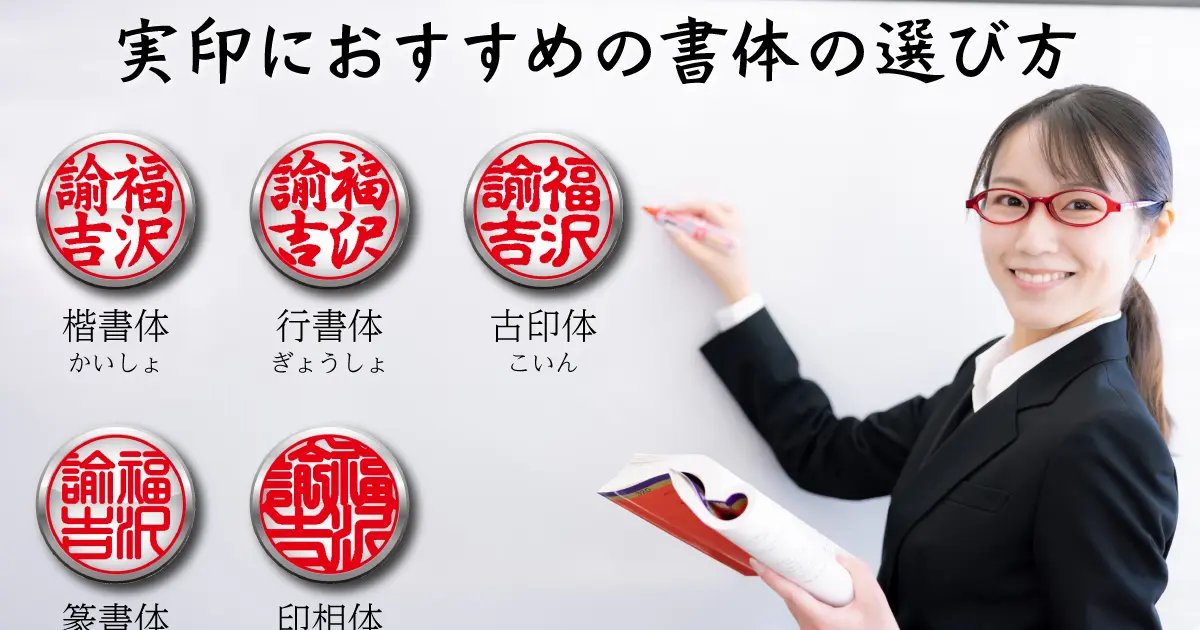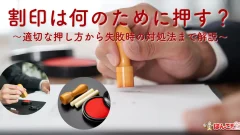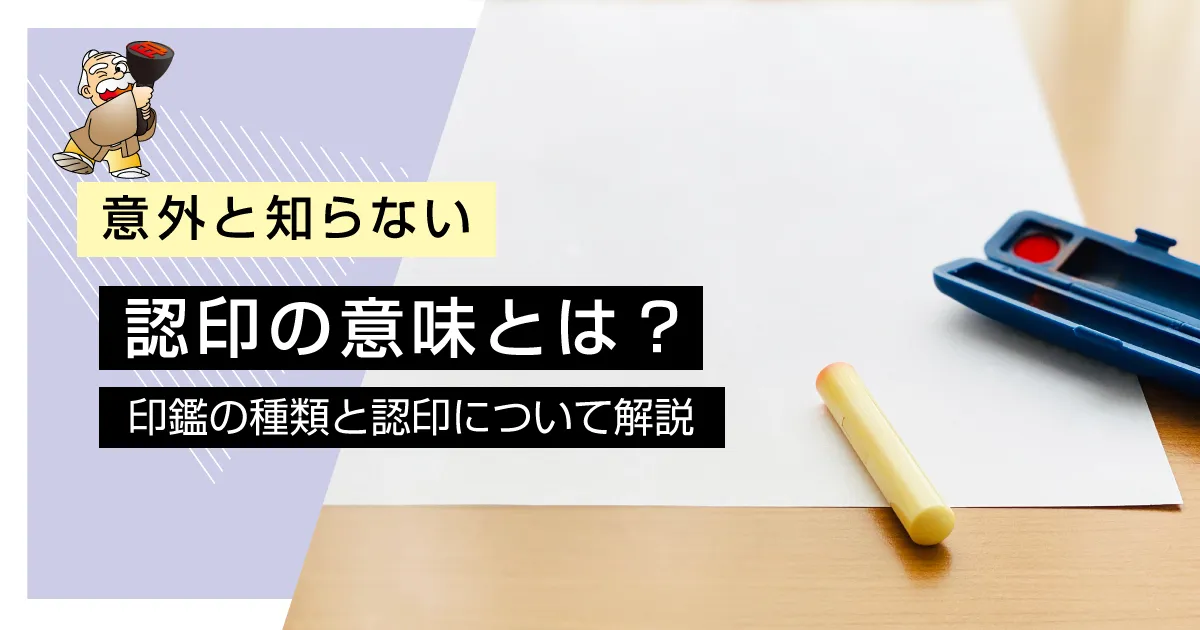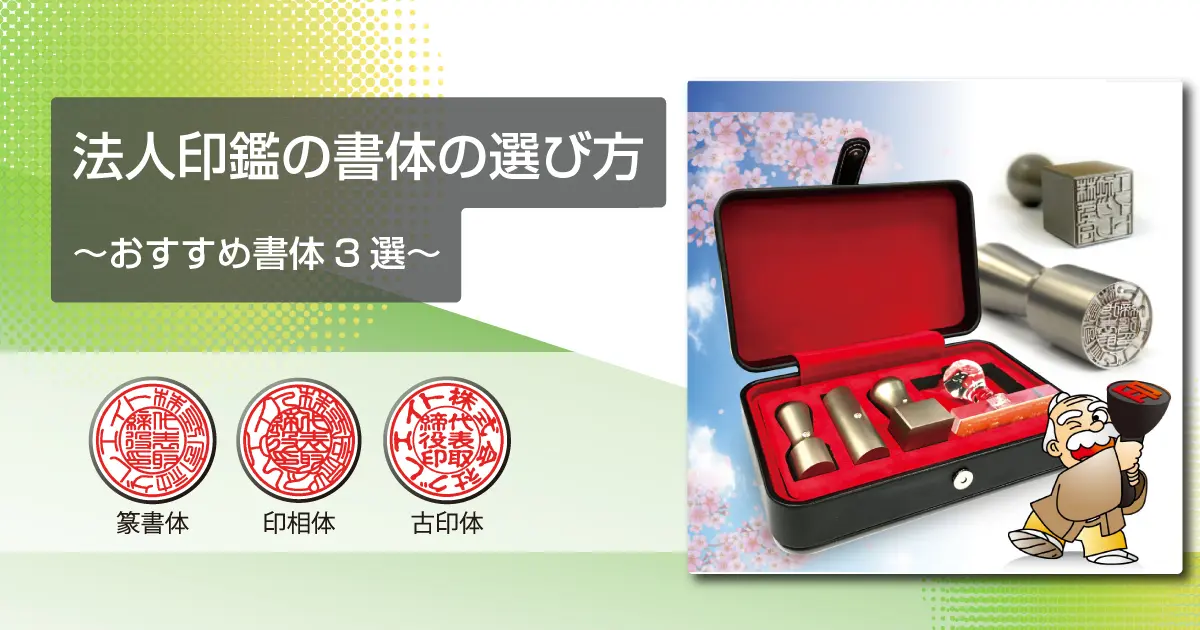Among personal HANKO, a registered seal is used for particularly important contracts.
When creating a registered seal, you want to choose an appropriate font. In this article, we will introduce how to choose the recommended font for your registered seal.
A registered seal is generally used as a set with a seal HANKO certificate, and it is not necessarily necessary to make it readable by a third party, as it is sufficient to be able to compare the imprint of the registered seal with that of the certificate. Please refer to the recommended fonts suitable for registered seals introduced in the article.
Types of HANKO fonts
Introducing the types of fonts used for HANKO.
Insoutai
Inso font is a typeface often used for registered seals and bank seals.
It is said to be a typeface derived from the seal typeface, and at first glance it is hard to tell what it is written in.
A characteristic of insoboi is that the lines of the letters spread out in all directions, and there are many places where they touch the lines of the outer frame.
Therefore, the advantage of choosing a stamp body is that the contact between the outer frame and the letters increases its strength and prevents it from chipping, making it possible to use it for a long time.
Also, since it is less readable than other typefaces, it also helps prevent fraudulent activities such as forgery. When creating a stamp for a HANKO, mechanical digging is done by hand, but by hand-carving the stamp for the inso body, the risk of counterfeiting can be further reduced.
The characters in the inso font extend in all directions, giving the impression of a wide end, and it is also known as a font that brings good luck, so it is also called the ``kisso font''.

Seal typeface
Seal font is the typeface that is the origin of inso font, and the font is very similar to inso font. Like the insobo, it is difficult to tell what is written at first glance, but compared to the insobo, the lines of the letters do not flow outward, making it a little easier to discern the characters. .
However, many of the characters have different shapes from those used today, so they have the advantage of being less readable and difficult to forge.
It is known as a traditional typeface introduced from China, and the seal typeface is also used for the characters printed on passports, postage stamps, and Japanese yen bills. It can be said that it is a typeface that is very familiar to Japanese people.

Kointai
Kointai was born as a typeface of Japanese origin during the Nara period, as a derivative of Reishotai.
The design has been completely changed from the angular design of Reisho, and the characters are rounded overall, and the typeface is characterized by uneven lines.
It is effective in preventing counterfeiting because the lines have a certain pitch, but it is also highly readable, so it has the advantage of being versatile and can be used for everything from registered seals to certified seals.
Among the highly readable typefaces, there are many contact points with the outer frame, and the strength of the engraving is high, making it less likely to be damaged. The margins are smaller than other typefaces, so if you engrave on a material that is prone to cracking, it may cause damage, so you must choose the material carefully.

Reishotai
Reisho is a typeface that improves readability by drawing the characters in a straight line.
The characters engraved in the Reisho style are horizontally elongated, and the kanji strokes have a unique movement.
Because the lines of the letters are drawn thick throughout, the font is strong against shock and is difficult to damage, and the simple design allows you to create a HANKO with a machine at a relatively low cost.
However, typefaces that are easy to carve by machine are also easily mass-produced and forged, so the risk of misuse is higher than hand-carved or difficult-to-read typefaces.
Gyosho font
Gyosho is a typeface that has a design that looks like a broken version of the letters in regular calligraphy, and is characterized by smooth, beautiful curves that look like they were drawn with a brush.
It is a typeface that is often chosen by women because each line of the letters has intonation, making it easy to read and has an excellent design.
However, since the thinner parts of the letters are more sensitive to impact and may be damaged, long-term use may be difficult. It can be said to be suitable for HANKO that do not require registration with government offices or notification to various institutions, such as registered seals.

Kaisho font
Kaisho is the typeface most familiar to Japanese people because it is highly recognizable and easy to read.
The advantage of a block font is that there are no unique characters that are distorted, and it is a font that anyone can read.
Ideal for engraving seals such as personal HANKO that have the purpose of confirming who affixed the seal.
However, since anyone can read it and imitate it, it is by no means safe from a security perspective.

Recommended fonts for registered seals
Now that we have confirmed the types of fonts, we will introduce an overview of jitsuin and recommended fonts for jitsuin.
What is a registered seal?
In order to choose a font that is suitable for a registered seal, let's check the characteristics of a registered seal.
A registered seal is a HANKO registered at a municipal office. By registering at a government office, a HANKO registration certificate will be issued, and with this certificate the HANKO will be recognized as a registered seal. A registered seal is used to seal important contracts such as real estate transactions, loan contracts, and automobile sales contracts, so it is necessary to leave proof that the contract was entered into by the person himself/herself.
Since only one registered seal can be registered, it is ideal to register a unique HANKO to prevent forgery.
Recommended fonts for registered seals
Recommended fonts for registered seals include inso font and seal font.
Since the characters in inso fonts have a unique shape and are difficult to read, they are suitable as typefaces for use in registered seals that require uniqueness.
Seal font is the original font for inso font, so it has similar characteristics. Both have excellent durability as they have many contact points with the outer frame of the engraving, making them resistant to impact.
Recommended fonts for bank seals
Let's also take a look at recommended fonts for HANKO other than registered seals.
What is a bank seal?
A bank seal is a HANKO used when filing a notification with a financial institution such as a bank.
It is used for procedures such as opening a bank account and making transfers at a counter.
Although it is possible to use a registered seal as a bank seal, the risk of forgery increases if you report it to multiple banks and use it more frequently, so it is recommended that you create separate seals and store them separately if possible.
It doesn't have to be difficult to read or unique like a registered seal, but it's a good idea to choose a font with a twist to prevent it from being counterfeited or misused.
Recommended fonts for bank seals
Recommended fonts for bank seals include seal font and old seal font.
Although the seal typeface has a unique character shape that is difficult to read, the lines and character shapes themselves are clear, so even if it is difficult to read, it is possible for a third-party bank employee to check it. In addition, the second font recommended for bank seals, the koin font, is easier to read than the seal font, but its rounded and sharp font makes it difficult to counterfeit. Masu.
Also, you may choose an ink body just like a registered seal.
Recommended fonts for seals
We will also introduce fonts recommended for mitshu, which are HANKO for everyday use.
What is a registered seal?
Unlike a registered seal or a bank seal, a registered seal is a HANKO that has not been reported or registered with any institution.
Since there is no need to register, the size and design of this HANKO are up to the individual.
The seal can be used for marriage registration, moving-in notification, resident registration application, national pension/insurance procedures, receiving mail, etc.
The main use of a seal is for daily procedures, and it is necessary for a third party to know who has affixed the seal, so it is best to create it in an easy-to-read typeface rather than one that is difficult to read. it's recommended.
Recommended fonts for seals
Recommended fonts for a personal seal include Kointai and Reishotai.
Both types of characters are highly readable, so even a third party can confirm whose seal it is.
Since there are no regulations regarding the design, there is no problem in using mass-produced ones such as Sanbunban. However, in order to give your HANKO a little more individuality, we recommend using a koin font with a unique font with ink pools and breaks, or a reisho font with a distinctive undulating character.
Recommended fonts by image
Lastly, I would like to introduce the image that typefaces give. Seal fonts are difficult to read but give a smart impression, Inso fonts are difficult to read but give a solemn impression, Koin fonts are easy to read and give a soft impression, and Reisho fonts are easy to read and have a powerful image. In the end, it is best to choose a typeface that matches the image you have in mind.
summary
We have explained the recommended fonts for registered seals. Since only one registered seal can be registered per person and is used for important contracts, we recommend choosing a unique typeface and creation method. Also, it is important that the registered seal can be checked against the HANKO certificate, so avoid using a font that anyone can read. Please refer to this article and create a jitsuin that suits you.
 日本語
日本語 English
English 简体中文
简体中文 繁體中文
繁體中文 한국어
한국어 ไทย
ไทย Tiếng Việt
Tiếng Việt Indonesia
Indonesia Français
Français Español
Español Português
Português







